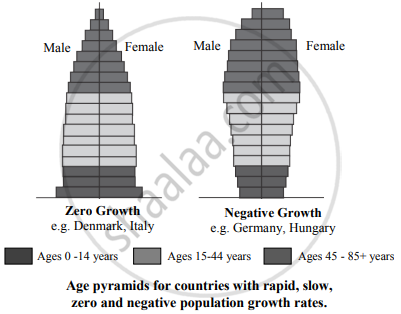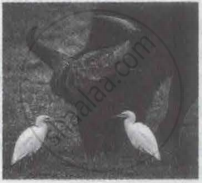Advertisements
Advertisements
Question
Define population growth. Explain different types of age pyramids.
Solution
Definition: The increase in the size of a population or increase in number of individuals is known as population growth. When resources in the habitat are unlimited, population show exponential growth. When resources in the habitat are limited, it leads to competition between individuals for limited resources. This type of population growth is called logistic growth
Age distribution and Age pyramids:
- A population consists of individuals with different ages. The entire population is divided into three age groups - prereproductive (0-14 years), reproductive (age 15-44 years), post reproductive (45-85+years)The relative proportion of individuals of various age groups in the population is referred to as age structure of the population.
- If the age distribution (per cent individuals of a given age or age group) is plotted for the population, the resulting structure is called as age pyramid.


RELATED QUESTIONS
Name important defence mechanisms in plants against herbivory.
Answer the following question.
Mention the term used to describe a population interaction between an orchid growing on a forest tree.
The number of deaths under ideal conditions is known as ______.
In the given picture, identify the type of interspecific interaction.

Cattle egrets always foraging close to the grazing cattle is an example of ____________.
With the decline in the population of fig species it was noticed that the population of wasp species also started to decline. What is the relationship between the two and what could be the possible reason for decline of wasps?
Define ectoparasite and endoparasite and give suitable examples.
Interspecific interaction could be ______.
Describe mutualism.
Give one example of commensalism.
